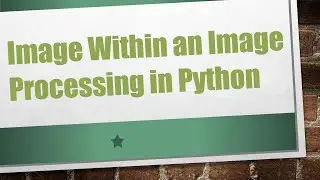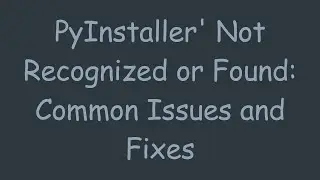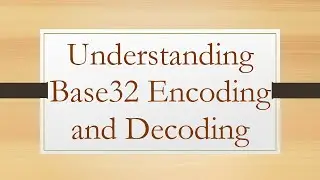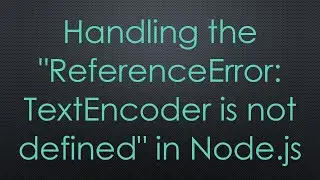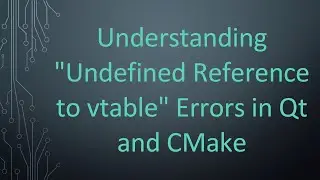How to Get the File Extension or Content Type from a File Byte Array in C#
Disclaimer/Disclosure: Some of the content was synthetically produced using various Generative AI (artificial intelligence) tools; so, there may be inaccuracies or misleading information present in the video. Please consider this before relying on the content to make any decisions or take any actions etc. If you still have any concerns, please feel free to write them in a comment. Thank you.
---
Summary: Learn how to determine the file extension or content type from a file byte array in C#. This guide covers various methods, including using the MimeMapping class and file signature analysis.
---
Determining the file extension or content type from a file byte array in C is a common requirement in many applications, especially those dealing with file uploads or downloads. This task can be approached in several ways, including using built-in .NET functionalities, libraries, or manual analysis of file signatures. This guide will explore these methods to help you accurately identify the file type from its byte array.
Using the MimeMapping Class
The .NET framework provides the MimeMapping class, which can be used to get the MIME type of a file based on its extension. However, when dealing with a byte array, you might need to initially save the byte array as a temporary file to utilize this class. Here’s how you can do it:
[[See Video to Reveal this Text or Code Snippet]]
In this example, GetMimeType takes a byte array and a file name (to infer the extension), writes the byte array to a temporary file, and then uses MimeMapping.GetMimeMapping to determine the MIME type.
Analyzing File Signatures
File signatures, also known as magic numbers, are unique sequences of bytes at the beginning of a file that identify the file type. You can create a method to check these signatures manually. Here’s an example:
[[See Video to Reveal this Text or Code Snippet]]
In this approach, the GetFileExtension method checks the initial bytes of the byte array against known file signatures stored in a dictionary. If a match is found, it returns the corresponding file extension.
Combining Both Methods
For a more robust solution, you can combine both methods: use file signatures to get a rough idea of the file type and then use MimeMapping or another library to refine the determination based on the complete file data.
Here’s an integrated approach:
[[See Video to Reveal this Text or Code Snippet]]
This method first tries to determine the file extension using file signatures. If unsuccessful and a file name is provided, it uses MimeMapping to get the MIME type.
By utilizing these methods, you can effectively identify the file type from a byte array in C, enhancing your application's ability to handle various file formats dynamically.

![Lukanga Melodies – Nshatala Mona Po / Mary Maria [Kalindula]](https://images.mixrolikus.cc/video/w7QeJgxtwP0)








